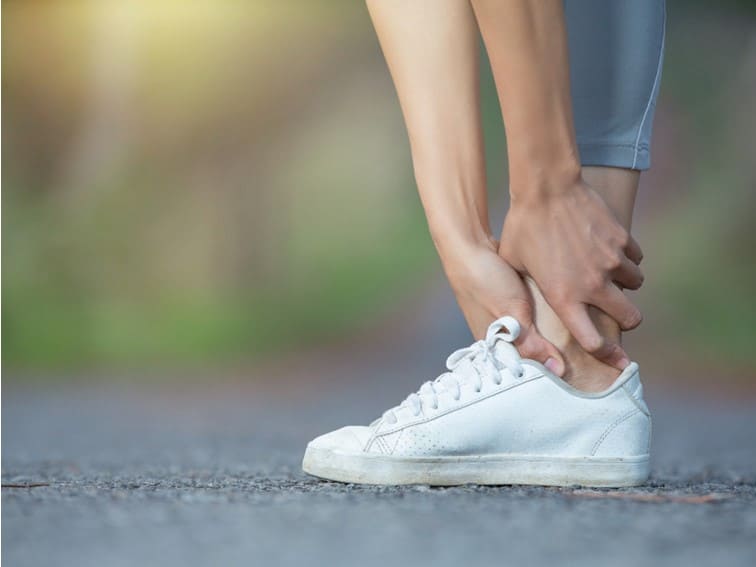Soft Tissue Injury Types | Symptoms | Treatment by Dr. Praharsha Mulpur
Ligaments, tendons, and muscles are the soft tissues that support the bones of your joints. Any damage to these structures may result in soft tissue injury.
Soft tissue injuries can range from mild to moderate – and, in some cases, severe. If you develop soft tissue injury, you will experience mild to moderate pain, inflammation, bruising, and swelling. In severe cases, the pain, swelling, and inflammation are severe. It happens when there is damage caused to the soft tissues that support bones and cartilages of the joints. The symptoms related to soft tissue injuries may depend on the nature and type of injury.
Soft Tissue Injury Types
The following is the classification of soft-tissues injuries:
- Sprains
- Strains
- Bruises (contusions)
- Bursitis
- Tendonitis
- Stress injuries
What is a sprain?
A sprain is a stretch or a partial tear to a ligament. When you turn suddenly or wrench, a strain occurs. Ligaments are supportive connective tissues that keep bones together by stabilizing and supporting the body’s joints. For instance, Ligaments in the knee region connect your thighbone with the shinbone (tibia) and help you walk. Sprains commonly occur in the following joints in your body: ankles, knees, elbow, and wrists.
While walking if your ankle suddenly experiences severe tension or pressure when your foot turns inward, you will experience severe pain. This is a case of a sprained ankle. This usually happens from a sudden twist. Similarly, a wrist sprain develops if you fall on an outstretched hand.
For sprains occurring due to excessive pressure and a partial tear in the ligaments, R.I.C.E. is the preferred treatment modality. However, for a completely torn ligament, surgery may be needed.
What is a strain?
Tendons attach muscles to bone. They look like fibrous cords. An injury to a muscle or tendon that may result due to overuse, excessive force, pressure, or stress. It can be as simple as a stretch of a muscle or tendon or can be a severe one involving a partial tear or complete tear of a tendon or muscle. A strain causes these symptoms – moderate to severe pain, swelling, muscle weakness, cramping, muscle spasms, and inflammation. The hamstring is a typical example of strain. Strains mostly occur in the leg or back.
For a mild to moderate strain, the best way to manage is R.I.C.E – rest, ice, compression, and elevation. Your physiotherapist will assist you with some simple exercises to relieve pain and improve mobility. However, for more severe cases of strains that involve a complete tear of muscles or tendons, surgery may be recommended. Mostly sportsmen and sportswomen are at risk of developing strains.
Soccer, football, hockey, boxing, wrestling, and other contact sports put athletes at risk for hamstring strains, as do sports that feature quick starts, such as hurdling, long jumping, and running races. Gymnastics, tennis, rowing, golf, and other sports that require extensive gripping have a high incidence of hand sprains. Elbow strains frequently occur in racquet, throwing, and contact sports.
What is a contusion (bruise)?
Contusions occur when a direct blow (or repeated blows) by a blunt object strikes part of the body, crushing underlying muscle fibers and connective tissue without breaking the skin. A contusion can result from falling or jamming the body against a hard surface. Discoloration of the skin is caused by blood pooling around the injury.
Most contusions are mild and respond well to the RICE protocol. If symptoms persist, medical care should be sought to prevent permanent damage to the soft tissues.
Bruise
A bruise or contusion is a type of soft tissue injury in which the underlying soft tissues – connective tissues and muscle fibers get damaged without breaking the skin. This happens when there is a direct blow to a part of the body or repeated blows with a blunt object. A contusion may result from falling or jamming the body against a hard surface. Blood clot formation underneath the skin or pooling of blood around the injury area causes discoloration of the skin. Apart from discoloration of the skin, you may experience pain with swelling and inflammation. As usual, RICE is the first line of treatment. For a serious type of bruise, you should see an orthopedic expert.
Soft Tissue Injury Types
To be continued in the next post….


